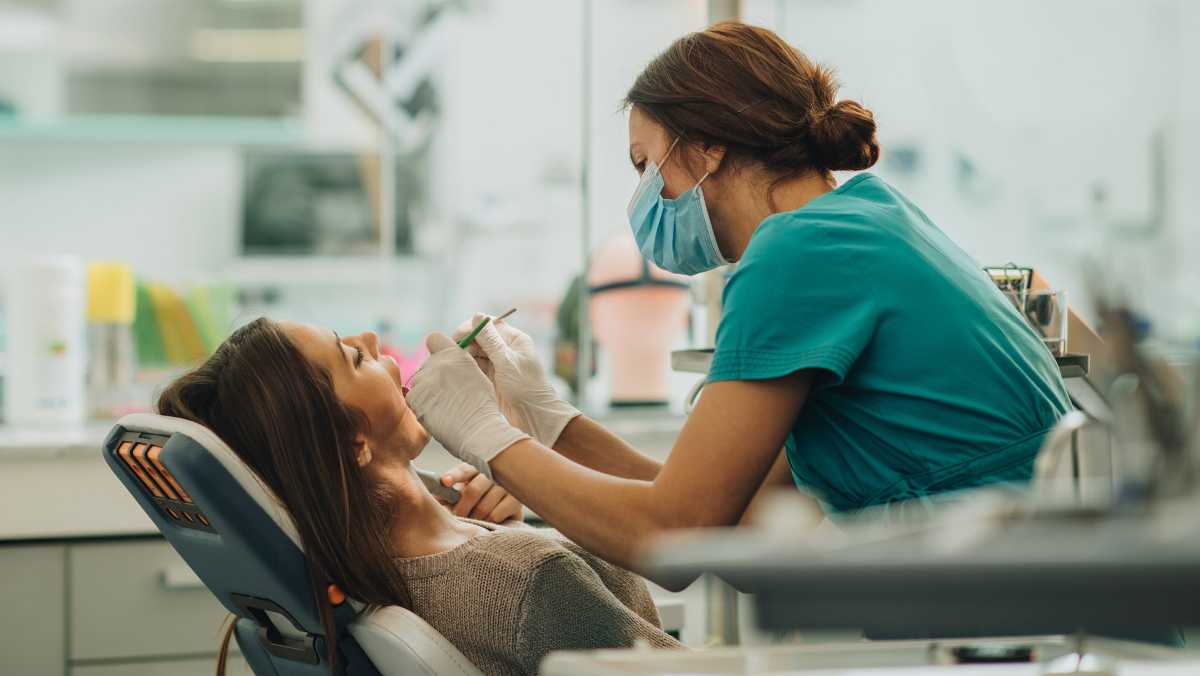Starting as a dental hygienist

- Jozy Gallmann
- 26 July 2021
- Edited 1 May 2025
- 4 min
- Starting
Do you want to start out as a dental hygienist? You can do so as a self-employed professional, with your own practice, or by buying into an existing practice. What do you need to arrange and what regulations will you have to deal with? In this article you will find all the information you need to be well prepared
What do you need to do and arrange when starting a business?
Find out with the 'Personal to-do list' on Business.gov.nl. Answer the questions and see the steps that are important in your situation.
All new entrepreneurs have to come up with a name, start keeping business records, take out insurance, and register their business with KVK. On top of all this, starting dental hygienists also have to consider the following:
1. How do you want to start?
There are different ways you can get started as an independent dental hygienist.
Self-employed dental hygienist
You can work as a self employed professional (zzp’er) in an existing dental hygienist or dental practice. The advantage of being self-employed is that you do not have to invest in your own practice. You can work for multiple practices and gain experience. This also ensures you avoid false self-employment. Use one of the standard (in Dutch) provided by the Tax Administration, (in Dutch), and the Dutch Association of Dental (NVM, in Dutch). This way you can show that you meet the conditions for entrepreneurship.
Joining a practice
Another option is to buy into an existing dental hygienist or dental practice, making you a co-owner (partner) in a maatschap (professional partnership) or shareholder in a BV (private limited company). The practice belongs to all partners or shareholders, but you treat your patients under your own name.
Established practices will have already built up a reputation and are generating turnover. When buying into an established practice you will need to pay for things like . Goodwill is what you pay for the reputation the owners of the practice have built up and for future profits.
Taking over a practice
You can also look for a practice to take over. When you acquire an established practice, you do not have to worry about the basics. You know how much revenue it is generating and you already have a building and patients. In addition to the property and inventory, you will also have to pay goodwill. Acquiring a practice can be an interesting option if the business generates enough revenue to let you recoup the costs within a few years.
Starting your own practice
If you want to set up your own practice, ask yourself if a new practice is viable. Think about how to get patients, what would be a suitable location, and whether it would make sense from a financial point of view. Writing a business plan will help you figure this out.
2. BIG-register for dental hygienists
The BIG register describes which activities a healthcare practitioner can and may perform. You only need to be BIG registered if you want to perform more complex treatments, such as administering anaesthesia, taking X-rays, and filling incipient cavities.
Marzieh Farhadi Akinabad, who works at Mondhygiënist praktijk Groningen, decided to become BIG-registered. "In my experience, patients appreciate that I can fill minor cavities right away, especially in children who still have their baby teeth."
Annemiek van der Bilt works at Almere-based JA Mondhygiëne and opted against BIG registration. "It seems like a good idea, but it is inconvenient in practice. If you hit a nerve while filling a cavity, for instance, the patient will still have to urgently see a dentist, which is hardly customer-friendly."
Quality Register
You can also choose to register in the independent Het Kwaliteitsregister Mondhygiënisten, (Quality Register of Oral Hygienists, in Dutch).
3. Health insurers and the AGB code
To submit a claim to a health insurance company, you will need an AGB code (Algemeen Gegevens Beheer code). You can request this code from Vektis (in Dutch). To request an AGB code, you have to be listed in the KVK Business Register.
Sector organisations will tell you how much insurers pay for insured treatments.
4. Laws applying to dental hygienists
The Care Providers Entry Act (Wet toetreding zorgaanbieders Wtza, in Dutch) states that you must register as a care provider 3 months before you start working as a dental hygienist. You do this by filling in a (in Dutch) from the Dutch Health Care Inspectorate (Inspectie Gezondheidszorg en Jeugd, IGJ). This will also tell you quality requirements you have to meet.
As a dental hygienist, you must also comply with the following Acts:
- Care Sector Quality, Complaints, and Disputes (Wet kwaliteit, klachten en geschillen zorg, Wkkgz).
- Medical Treatment Contracts (Wet op de geneeskundige behandelingsovereenkomst, WGBO)
- Nuclear Energy (Kernenergie Wet KEW) if you work with X-rays.
5. Recording patient data
To protect your patients' privacy, there are rules for collecting and processing patient . For example, you may keep data only with a patient's consent.
6. VAT
Dental hygienists are exempt from VAT. This means you do not have to charge VAT, cannot reclaim VAT on costs or purchases, and do not have to file VAT returns.
7. Limiting risks
Entrepreneurs are responsible for controlling or covering the risks they run, such as injuries inflicted on a patient while you are at work or loss of income if you fall ill. With insurance, you can cover risks that you cannot afford to pay yourself.
General terms and conditions also help you limit risks. You set out your rights and duties and those of your patient. You can draw up your general terms and conditions yourself. Or you can seek advice from or use templates provided by sector organisation (in Dutch) or the association of healthcare providers (in Dutch) .
KVK Insurance Check
Some insurances are mandatory, others are useful. Which do you need? The KVK Insurance Check helps you choose your insurance policies.
8. Administrative records
Entrepreneurs are required to keep accurate business administration. You can either do this yourself or outsource it. Many entrepreneurs in oral care outsource credit management to a factoring company. They take care of billing and collection on your behalf.
General information for new entrepreneurs
In addition to the above, new entrepreneurs also have to:
- draw up a financial plan
- choose a company name
- register with KVK
- find out which tax deductions they can use
Also, read the checklist for starting a new business. You will find all the steps you have to take when starting your own business.

